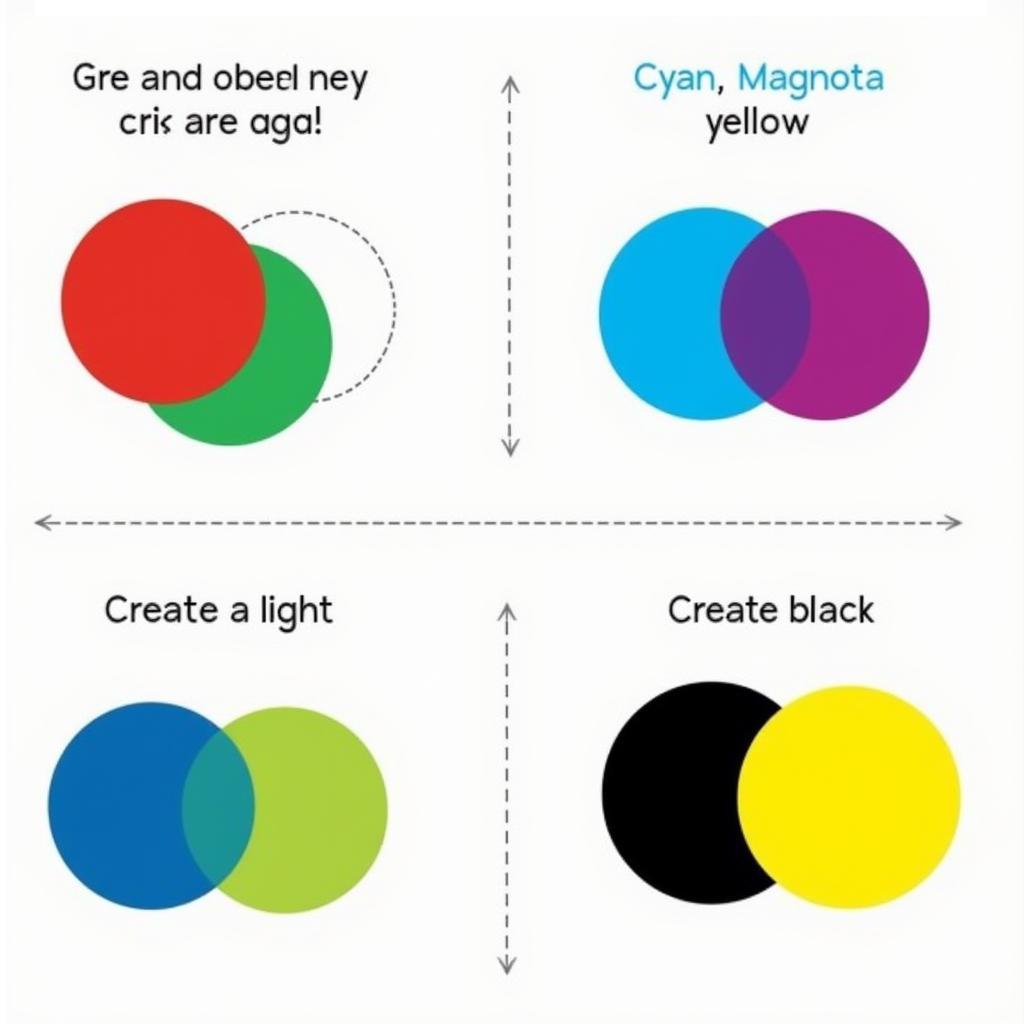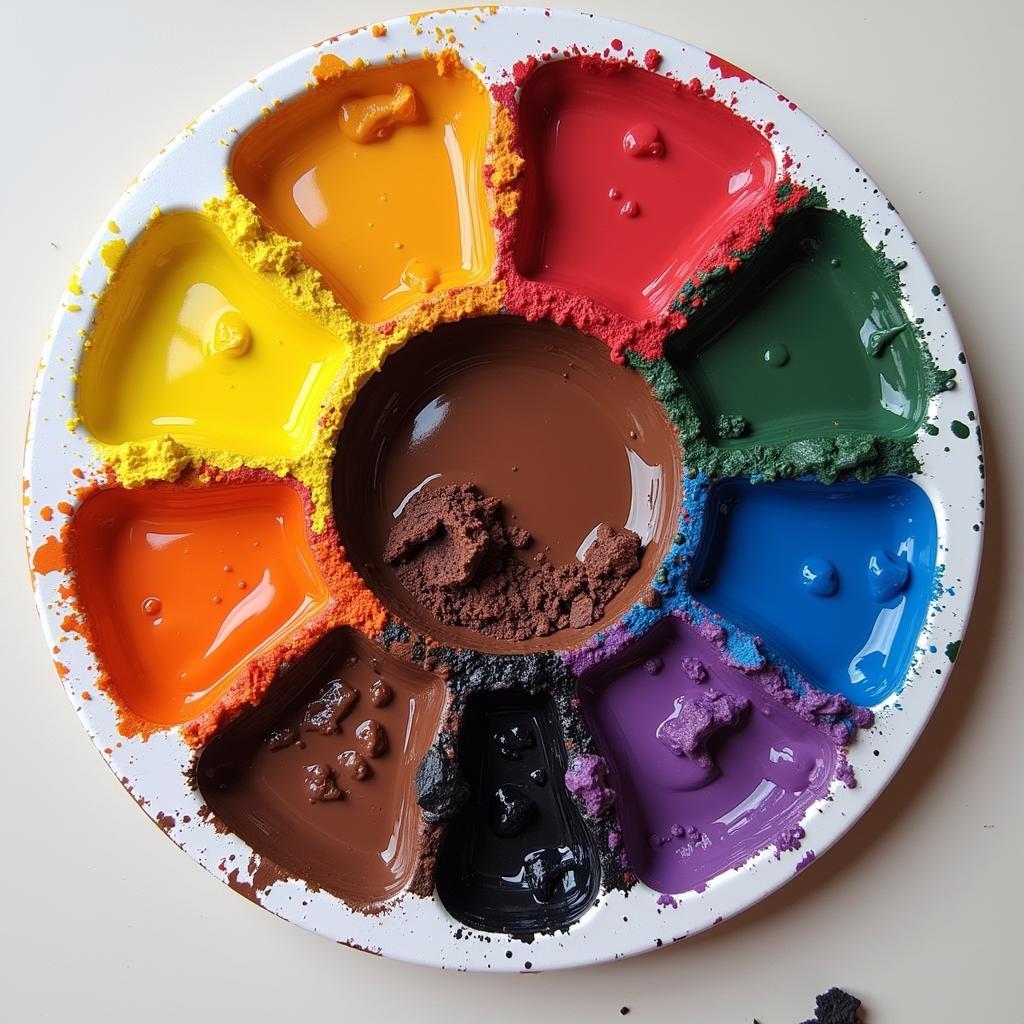When you mix all the colors of light together, you get white. But what happens when you mix all the colors of paint? This seemingly simple question opens up a world of color theory and leads to a surprising answer. Understanding this difference between additive and subtractive color mixing is key to mastering any artistic endeavor, from painting your home to designing a digital masterpiece.
The Science Behind Color Mixing
The answer to “what color is all colors combined” depends on whether we’re talking about light or pigment. These two behave very differently, leading to opposite results. With additive color mixing, such as with light, combining all colors results in white. This is because each color of light adds its wavelength to the mix, eventually encompassing the entire visible spectrum. Conversely, subtractive color mixing, as with paints or inks, works by absorbing certain wavelengths. When all colors are combined, they absorb more and more light, ultimately resulting in a dark brown or black. This difference is fundamental to understanding how color works. is black all colors combined explores the subtractive color mixing process in greater detail.
 Additive and Subtractive Color Mixing Explained
Additive and Subtractive Color Mixing Explained
What is All the Colors Combined in Paint?
In the world of pigments, combining all colors doesn’t produce white, but rather a muddy brown or near-black hue. This is because pigments absorb light. Each pigment absorbs certain wavelengths of light and reflects others, which is what we perceive as color. When you mix pigments, each added color absorbs more light, leaving less to be reflected. Eventually, with enough mixed pigments, almost all light is absorbed, resulting in a dark color. You can find a comprehensive explanation of this phenomenon at is black all the colors combined.
Why Doesn’t Mixing All Paint Colors Create True Black?
Theoretically, mixing all paint colors should create black. However, in practice, it’s difficult to achieve pure black this way due to impurities in pigments. Even black pigments themselves are not perfectly absorbent. This is why artists often rely on pre-made black paint rather than attempting to mix it themselves.
 Experimenting with Mixing Paint Colors
Experimenting with Mixing Paint Colors
What Happens When You Mix All the Colors of Light?
Unlike pigments, mixing all colors of light results in white. This is the principle behind how screens create color. Red, green, and blue light, known as the primary additive colors, combine in varying intensities to create the spectrum of colors we see on our screens. This process of additive color mixing is the opposite of subtractive mixing. More information on the principles of additive color mixing can be found at what is all the colors combined.
Practical Applications of Color Mixing
Understanding color mixing is crucial in many fields. Artists use this knowledge to create specific hues and effects. Designers use it in everything from website design to interior decorating. Even in everyday life, understanding color mixing can help you choose the right paint colors for your home or create a vibrant garden. is the color black all colors combined further explores the intricacies of color combination. For those interested in exploring digital color mixing, how to make colored lights in minecraft offers a fun and practical application.
Expert Insight
“Color mixing is both a science and an art,” says renowned color specialist, Dr. Anya Sharma. “Understanding the underlying principles empowers you to manipulate color effectively, whether you’re working with light or pigment.”
Expert Insight
Another leading expert in the field, Mr. David Miller, adds: “The difference between additive and subtractive color mixing is often misunderstood. Recognizing this distinction is fundamental to achieving desired results in any creative pursuit.”
Conclusion
So, what color is all colors combined? The answer depends on the medium. With light, it’s white. With pigment, it’s a dark brown or near-black. Understanding this fundamental difference is key to unlocking the power of color in any creative endeavor.
FAQ
- What are the primary colors of light? Red, green, and blue.
- What are the primary colors of pigment? Cyan, magenta, and yellow.
- Why does mixing all paint colors not create true black? Due to impurities and imperfect absorption of pigments.
- What is additive color mixing? Combining light to create colors, resulting in white when all are mixed.
- What is subtractive color mixing? Combining pigments to create colors, resulting in dark brown/black when all are mixed.
- What are some practical applications of color mixing? Art, design, interior decorating, etc.
- Where can I learn more about the science of color? Numerous online resources and books explore color theory in depth.
Need help with your next painting project? Contact us at Phone Number: 0373298888, Email: [email protected] or visit us at 86 Cầu Giấy, Hà Nội. Our customer service team is available 24/7.
